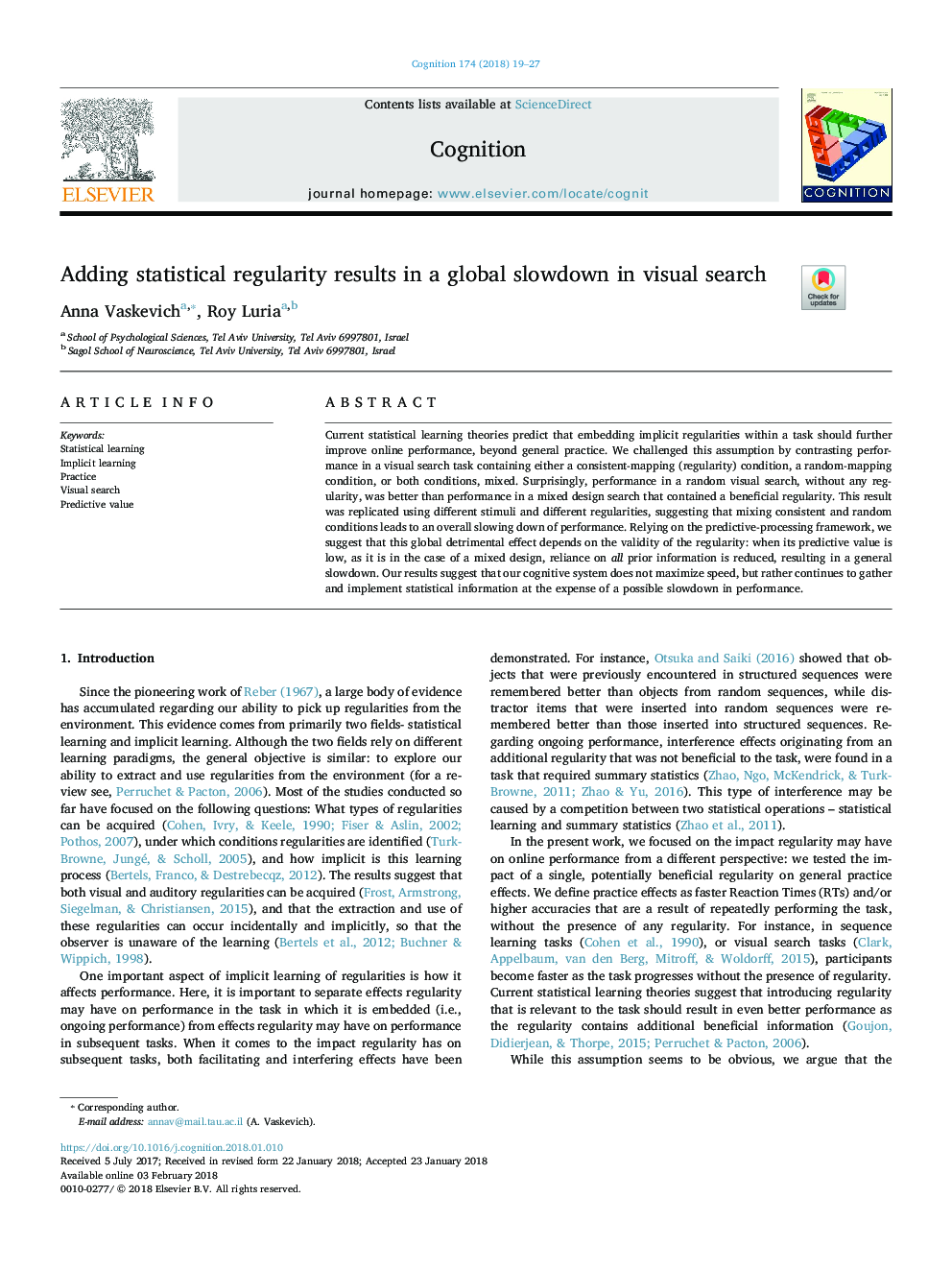| Article ID | Journal | Published Year | Pages | File Type |
|---|---|---|---|---|
| 7285386 | Cognition | 2018 | 9 Pages |
Abstract
Current statistical learning theories predict that embedding implicit regularities within a task should further improve online performance, beyond general practice. We challenged this assumption by contrasting performance in a visual search task containing either a consistent-mapping (regularity) condition, a random-mapping condition, or both conditions, mixed. Surprisingly, performance in a random visual search, without any regularity, was better than performance in a mixed design search that contained a beneficial regularity. This result was replicated using different stimuli and different regularities, suggesting that mixing consistent and random conditions leads to an overall slowing down of performance. Relying on the predictive-processing framework, we suggest that this global detrimental effect depends on the validity of the regularity: when its predictive value is low, as it is in the case of a mixed design, reliance on all prior information is reduced, resulting in a general slowdown. Our results suggest that our cognitive system does not maximize speed, but rather continues to gather and implement statistical information at the expense of a possible slowdown in performance.
Related Topics
Life Sciences
Neuroscience
Cognitive Neuroscience
Authors
Anna Vaskevich, Roy Luria,
